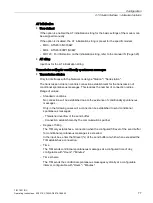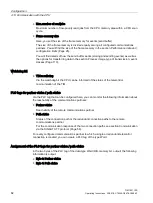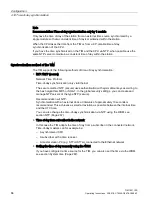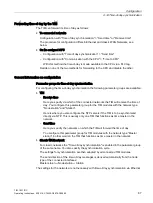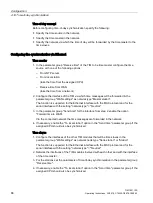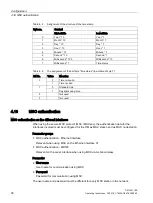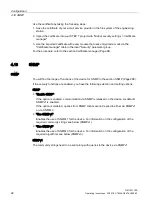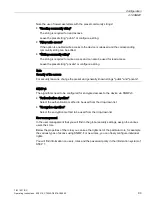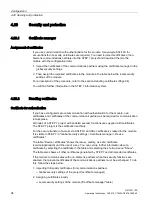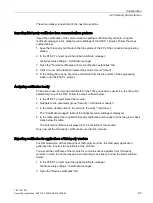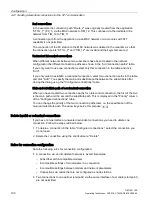
Configuration
4.14 Time-of-day synchronization
TIM 1531 IRC
Operating Instructions, 02/2018, C79000-G8976-C468-02
87
Forwarding time of day by the TIM
The TIM can forward its time of day as follows:
●
To connected networks
Configuration with "Time of day synchronization" > "Send time" or "Receive time"
The procedure for configuration differs in Ethernet and classic WAN Networks, see
below.
●
On the assigned CPU
–
Configuration with "Time of day synchronization" > "Send time"
–
Configuration with "Communication with the CPU" > "Time to CPU"
With this method the time-of-day is made available to the CPU via a PLC tag.
Decide on one of the two methods for forwarding to the CPU and disable the other.
General information on configuriation
Parameter groups for time-of-day synchronization
For configuring the time-of-day synchronization the following parameter groups are available:
●
TIM
–
Receive time
Here you specify via which of the connected networks the TIM will receive the time of
day. You configure this parameter group for the TIM modules with the network type
"Node station" and "Station".
Here is where you also configure the NTP servers if the TIM is to be synchronized
directly via NTP. This is usually only one TIM that functions as time master in the
network.
–
Send time
Here you specify the networks on which the TIM will forward the time of day.
You configure this parameter group for TIM modules with the network type "Master
station" in other word on the TIM that functions as time master in the network.
●
Classic WAN network
For classic networks the "Time-of-day synchronization" is enabled in the parameter group
of the same name. You also specify the synchronization cycle.
The settings for synchronization are then adopted by all connected TIM modules.
The send direction of the time-of-day messages is derived automatically from the node
type of the connected interfaces:
Master staion
⇒ Node station ⇒ Station
The settings for the network are not necessary with time-of-day synchronization via Ethernet.





